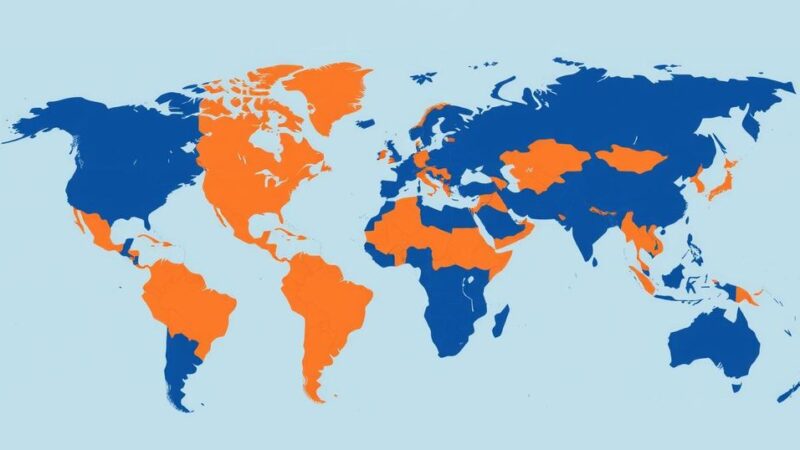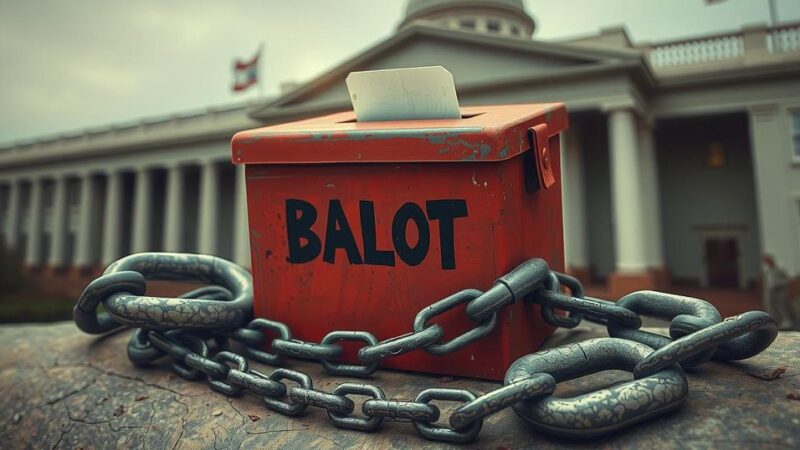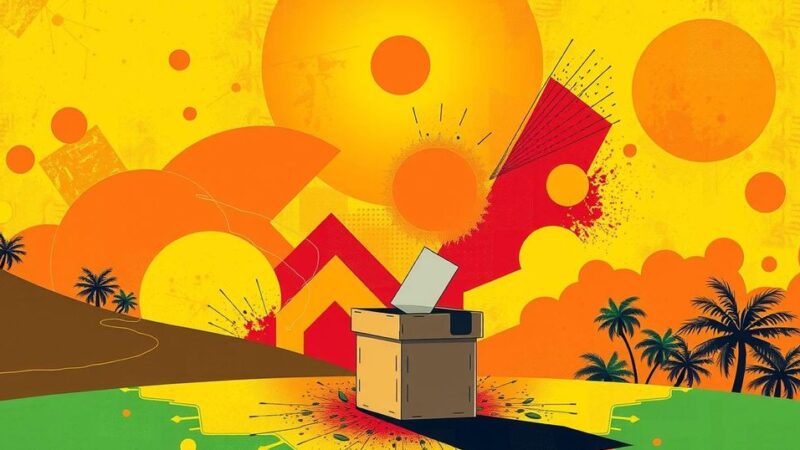Police in Nairobi utilized tear gas to disperse protests against alleged abductions of government critics, with human rights groups reporting 82 cases since June. Opposition lawmaker Okiya Omtatah led some protesters, who decried illegal detentions amidst fears of increasing repression under President Ruto’s administration, who has promised to end such actions.
In Nairobi, the Kenyan police utilized tear gas to disperse a significant protest responding to a series of alleged abductions of individuals critical of the government. Human rights organizations report that numerous Kenyans have been kidnapped in recent months, attributing these actions to the police and intelligence agencies. Demonstrators took to the streets, expressing their grievances against illegal detentions as police maintained a presence nearby on horseback. Amid the protests was Okiya Omtatah, an opposition lawmaker, who led a group of protesters in a sit-in, utilizing chains to physically bind themselves from being separated by the authorities. Reports indicate that Omtatah, along with ten others, faced detention during the demonstrations.
Concerns have been raised by the Kenya National Commission on Human Rights regarding the alarming rise in the abduction of government critics, recording a total of 82 cases since protests commenced in June against proposed tax increases. The protests have transitioned into a broader movement challenging President William Ruto’s administration. Ruto stated intentions to cease abductions to ensure a peaceful existence for the youth. Furthermore, Omtatah has pursued legal action in the High Court to secure the release of seven youths allegedly taken by police.
As the protests evolved, demonstrations began to highlight the pervasive fear experienced by citizens, as emphasized by Orpah Thabiti, a protester who remarked on the precarious conditions they face daily. Notably, four social media users vanished after posting AI-generated images of President Ruto considered offensive. The rights commission’s warnings suggest a potential regression to a period marked by the forced disappearances of dissenters, reminiscent of the oppressive rule during former President Daniel Moi’s tenure. Wanjiru Gikonyo, a researcher focusing on governance, described the protests as originating organically, showcasing a digital mobilization that reflects widespread disenchantment with the current leadership’s failure to fulfill the aspirations of democratic transition.
Recent months in Kenya have seen a worrying trend of abductions targeting individuals who express criticism towards the government. Human rights organizations have highlighted these kidnappings, which they allege are orchestrated by police and intelligence services. The growing unrest due to these abductions has led to widespread protests, reflecting the public’s desire for accountability and respect for human rights. The current political climate under President William Ruto has elicited concern about a return to authoritarian practices reminiscent of previous administrations, heightening demands for reform and justice in governance.
The protests in Kenya illustrate a significant public outcry against government actions viewed as oppressive, particularly the alarming surge in abductions of critics. As demonstrators gather in opposition to these violations of rights, voices calling for accountability and justice grow louder. The implications of these events suggest that Kenyans are actively seeking substantive changes in governance, reflecting a broader push for democratic values that resonate across various societal groups. Continuing legal actions and activism may further influence the government’s response to these issues in the forthcoming future.
Original Source: www.aljazeera.com






